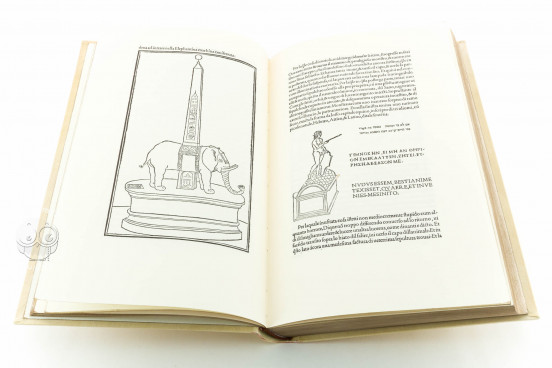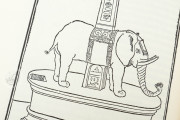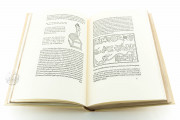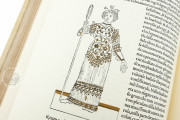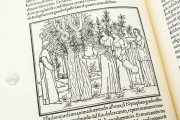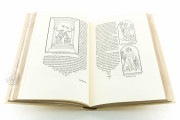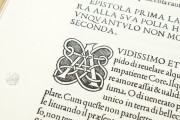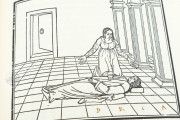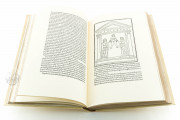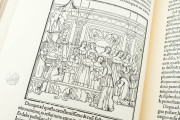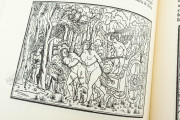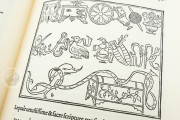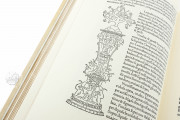First printed in Venice in 1499 by Aldus Manutius, Hypnerotomachia Poliphili—often rendered in English as Poliphilo’s Strife of Love in a Dream—stands as one of the crowning achievements of the Renaissance book. A lavishly illustrated incunable, it marries experimental prose, visionary imagery, and groundbreaking typography into a single, integrated artifact. Its pages are celebrated for their fusion of text and image, their archaeological imagination, and their lasting impact on the design of Roman type.
Authorship and the Famous Acrostic
Hypnerotomachia Poliphili is traditionally attributed to the Dominican friar Francesco Colonna. The most persuasive internal evidence is an acrostic formed by the decorative initials of the chapters that spells out “POLIAM FRATER FRANCISCVS COLVMNA PERAMAVIT” (“Brother Francesco Colonna has dearly loved Polia”). While this clue has long been read as a confession of authorship, alternative attributions have been proposed over time, including Leon Battista Alberti and Lorenzo de’ Medici. No competing theory, however, has displaced the Colonna consensus.
Plot Summary: A Dream-Quest for Polia
The narrative takes the form of a dream vision set in 1467. Its protagonist, Poliphilo, wanders through an elaborately imagined landscape in pursuit of his beloved Polia. Along the way, he encounters triumphal processions, mythological figures, and scenes of ritual and courtly ceremony. The story unfolds as a sequence of tableaux that blend allegory with antiquarian curiosity, culminating in a vision of love that is as elusive as it is exalted.
Language and Style: A Baroque Experiment
Hypnerotomachia is renowned for its stylistic audacity. Written in a Latinate Italian dense with neologisms, it pushes prose toward a decorative, almost sculptural excess. This highly descriptive idiom invites the reader to visualize spaces, objects, and ceremonies with near-archaeological precision, creating a hybrid experience between literature and visual art.
Aldus Manutius and the Aldine Press
Printed by Aldus Manutius at the Aldine Press in December 1499, the book exemplifies the Venetian renaissance of humanist printing. It is frequently cited as one of Aldus’s masterpieces for the harmony it achieves between typographic layout, letterforms, and illustration. The edition’s overall design set a high-water mark for the incunable era and shaped the aesthetics of early modern printing.
Typography: From Griffo’s Roman to Modern Revivals
The roman type was cut by Francesco Griffo for Aldus and helped establish the authority of the new humanist letter in print. Its legacy lives on in major twentieth-century revivals: Poliphilus by Monotype (1923) and Bembo, a 1929 revival stewarded by Stanley Morison. Hypnerotomachia is thus central not only to literary history but also to the genealogy of modern book typography.
Illustrations: Woodcuts and the Integration of Text and Image
The 1499 edition includes a substantial suite of woodcuts—commonly reported at roughly 168–174, depending on how ornamental elements are counted—depicting architecture, gardens, processions, and mythic or allegorical scenes. The artists remain anonymous; scholars have proposed names such as Benedetto Bordone or Benedetto Montagna and noted affinities with figures like Mantegna or Bellini, but no attribution has secured consensus. The seamless choreography of image and text is integral to the work’s enduring mystique.
Surviving Copies
First editions are held by major libraries and museums in Europe and North America. The number of copies that exist today is around 270.
Why Hypnerotomachia Poliphili Still Matters
Beyond its hypnotic beauty, Hypnerotomachia unites literature, art, and design into a singular Renaissance artifact. It crystallizes the humanist ambition to recover—and reinvent—antiquity, while demonstrating how typography and illustration can shape narrative meaning. More than five centuries on, it remains a touchstone for anyone interested in the origins of modern book culture.
We have 1 facsimile edition of the manuscript "Hypnerotomachia Poliphili": Hypnerotomachia Poliphili facsimile edition, published by Vicent Garcia Editores, 2000
Request Info / Price
